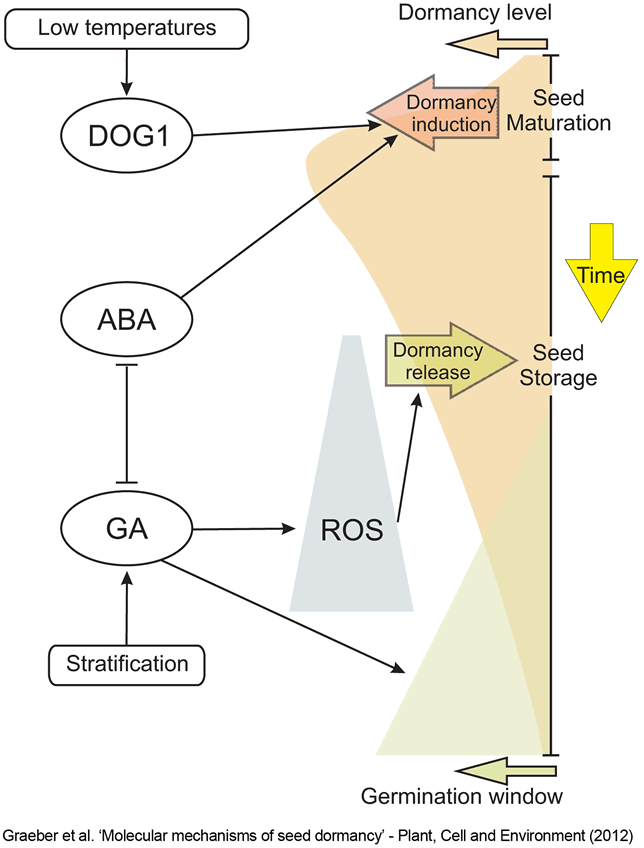Plant, Cell and Environment 35: 1769-1786 (2012)
Molecular mechanisms of seed dormancy
University of Freiburg, Faculty of Biology, Institute for Biology II, Botany / Plant Physiology, Schänzlestr. 1, D-79104 Freiburg, Germany (KG, GLM)
Department of Plant Breeding & Genetics, Max Planck Institute for Plant Breeding Research, Carl-von-Linné-Weg 10, 50829 Cologne, Germany (KN, EM, WM)
School of Biological Sciences, Plant Molecular Science, Royal Holloway, University of London, Egham, Surrey TW20 0EX, Uk (GLM);
Web: 'The Seed Biology Place' - www.seedbiology.eu
*Equal contribution
Received 2012; Revised 2012; Accepted 2012
Article first published online: 19 June 2012
DOI 10.1111/j.1365-3040.2012.02542.x

Figure 2. A hypothetical model showing the mechanisms of seed dormancy induction and release.
The seed dormancy level (indicated in beige) increases during seed maturation and decreases during seed storage (after-ripening), leading to a widening of the germination window (indicated in green). Major factors for the induction of seed dormancy are the plant hormone ABA and the dormancy factor DOG1. DOG1 transcription levels are enhanced by low temperatures during seed maturation. The plant hormone GA is required for germination and the ABA and GA pathways have an antagonistic relation. Stratification enhances germination by enhancing GA levels. Increasing ROS levels during seed storage reduce seed dormancy. The relative passage of time is indicated by a yellow arrow, other arrows indicate positive effects.
| Article in PDF format (1.2 MB) |
|
|
|
The Seed Biology Place |
Webdesign Gerhard Leubner 2000 |